I have this tree that I’ve been growing out (well…..I have many trees, but this one is in the ground, it was a volunteer, maybe deposited by bird trying to poop on my head, a southern hackberry, a name I prefer to sugarberry, which sounds like some special technique practiced on a sugar daddy, ummmm…..anyway, it’s a celtis lævigata that has grown too big, much like this sentence) that needs to be collected. 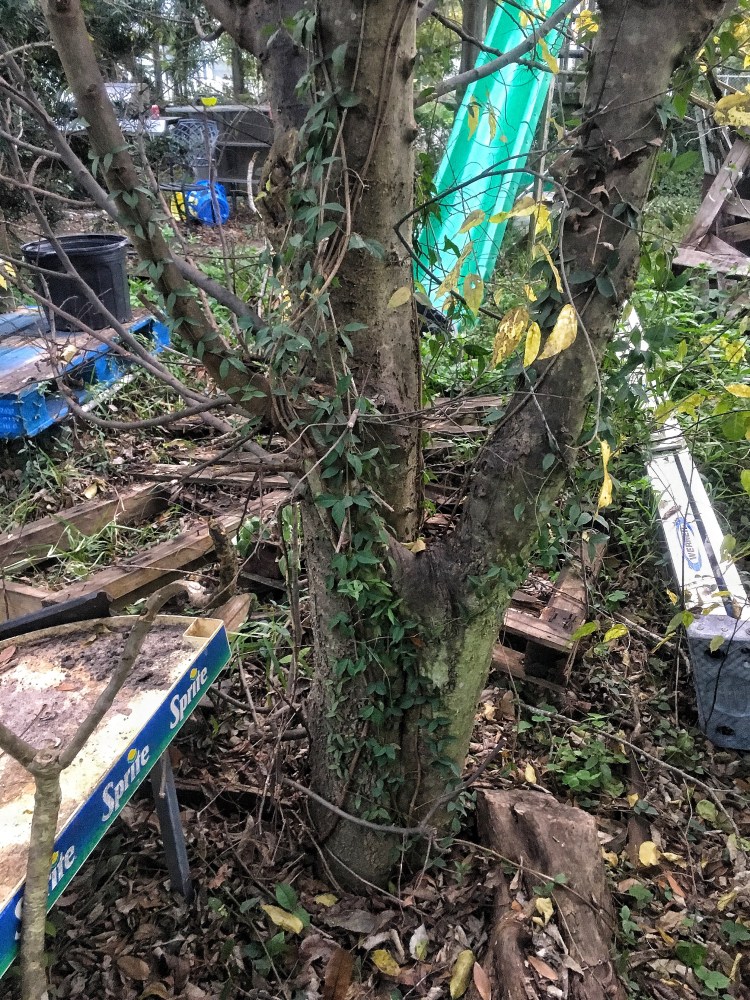 Like I said, big, and in the ground.
Like I said, big, and in the ground. 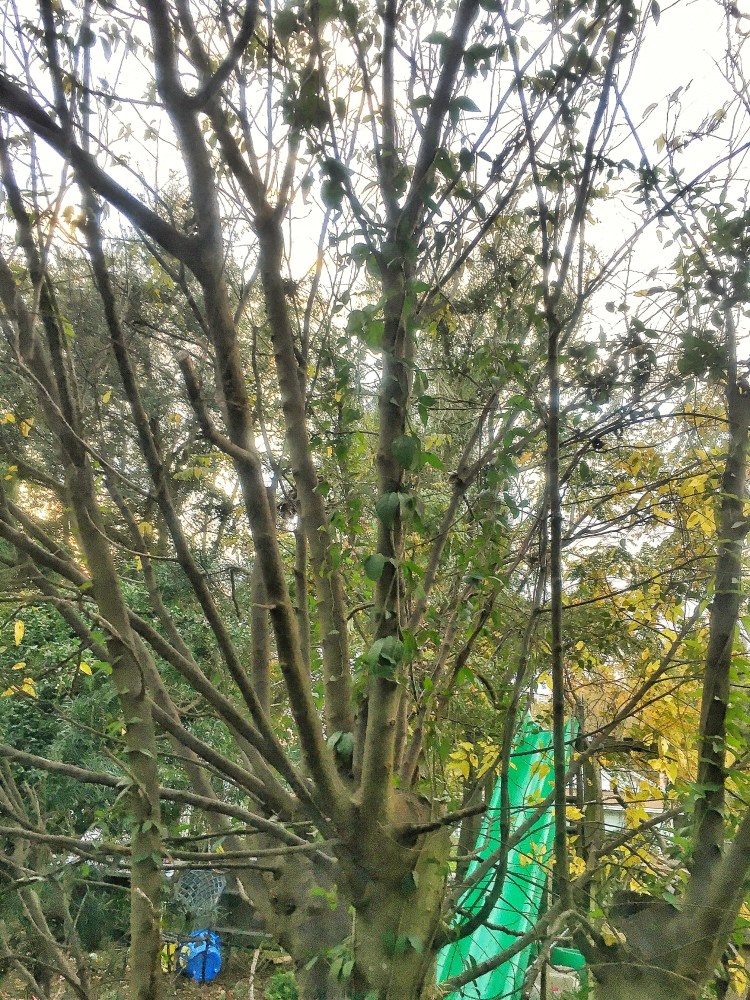 I meant to dig it out about two years ago. I got sick though, and that’s all I have to say about that. But this isn’t about collecting it. Maybe soon, but I’ll need help with it. Today’s post is a quick one, easy peasy, with only a few big words and two or three diagrams and illustrations. What I’m after today are called “suckers”. No, really, suckers. I think that they’re called that because it’s believed that they “suck” the energy from the main tree, growing off the roots as they do.
I meant to dig it out about two years ago. I got sick though, and that’s all I have to say about that. But this isn’t about collecting it. Maybe soon, but I’ll need help with it. Today’s post is a quick one, easy peasy, with only a few big words and two or three diagrams and illustrations. What I’m after today are called “suckers”. No, really, suckers. I think that they’re called that because it’s believed that they “suck” the energy from the main tree, growing off the roots as they do.
There are different names we could use, adventitious shoots, basal shoots, root sprouts, water sprouts, but I like suckers. Who doesn’t like a good sucker, huh? A tree that does this is called surculose. Whatever that means……..ok, I had to look it up, it’s root (heh heh) is Latin for sucker- surculosus plus the ending ‘ose. Which doesn’t help much, does it? Anyway, I thought the Latin word for “sucker” was “fellator”?
Let me explain what I’m actually doing. We have a southern hackberry. 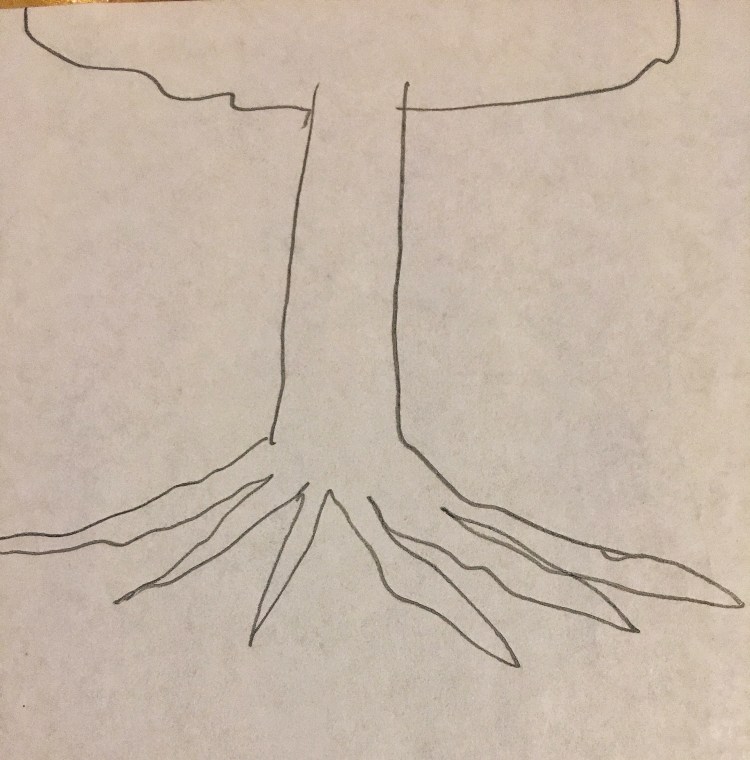 Oh, by the way, here’s a “fact” that most people are taught in school that is untrue (like the one that human blood is blue until it hits the oxygen in the air). We were taught that a trees roots only grow as wide as the canopy.
Oh, by the way, here’s a “fact” that most people are taught in school that is untrue (like the one that human blood is blue until it hits the oxygen in the air). We were taught that a trees roots only grow as wide as the canopy.
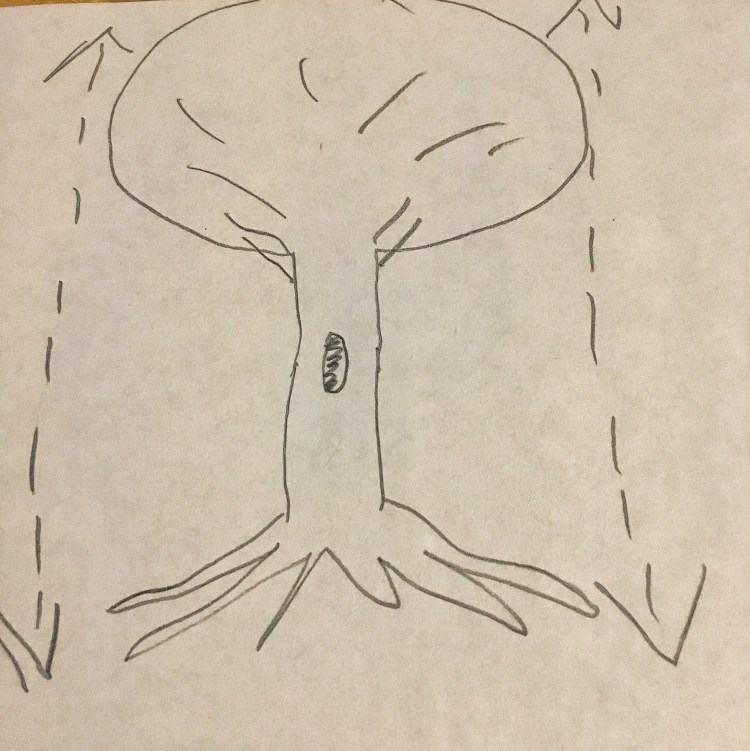 The real fact is that the roots grow 2-3 times as wide as the canopy.
The real fact is that the roots grow 2-3 times as wide as the canopy.  This is important on our hackberries. You see, on the roots (and many other trees, like elms or bananas) are buds (technically meristems, cells which can differentiate into various organs, like more roots or shoots) that will sprout into new trees. In this way, one tree can create its own thicket or stand or forest even, without having to produce seed.
This is important on our hackberries. You see, on the roots (and many other trees, like elms or bananas) are buds (technically meristems, cells which can differentiate into various organs, like more roots or shoots) that will sprout into new trees. In this way, one tree can create its own thicket or stand or forest even, without having to produce seed. 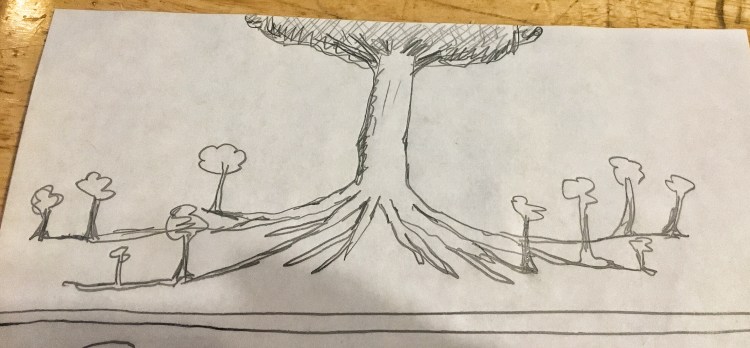 Which might explain the low fruit production on many celtis; it might take less energy to reproduce this way than making fruit. A stand of trees like this are genetically identical and the actual term is a “genet”. The most famous example is the quaking aspen colony (its called “Pando”) in Utah that is sometimes considered the largest organism (by mass) on the planet with 47,000 individual trees connected by one root system. It covers 106 acres (43 hectares). The scientist believe this colony is anywhere between 80,000- 1,000,000 years old That’s right, a million years old!
Which might explain the low fruit production on many celtis; it might take less energy to reproduce this way than making fruit. A stand of trees like this are genetically identical and the actual term is a “genet”. The most famous example is the quaking aspen colony (its called “Pando”) in Utah that is sometimes considered the largest organism (by mass) on the planet with 47,000 individual trees connected by one root system. It covers 106 acres (43 hectares). The scientist believe this colony is anywhere between 80,000- 1,000,000 years old That’s right, a million years old!
The problem with the trees being genetically identical is that if something external affects one tree (say, a bug or a disease) it could wipe out the whole colony. Which many people believe is happening to Pando. It’s dying. They just don’t know what the cause is, whether it’s drought, insects, or disease. Or a combo of all three. Sad really.
How does all this relate to bonsai? We can collect these “root suckers” and make bonsai of course. 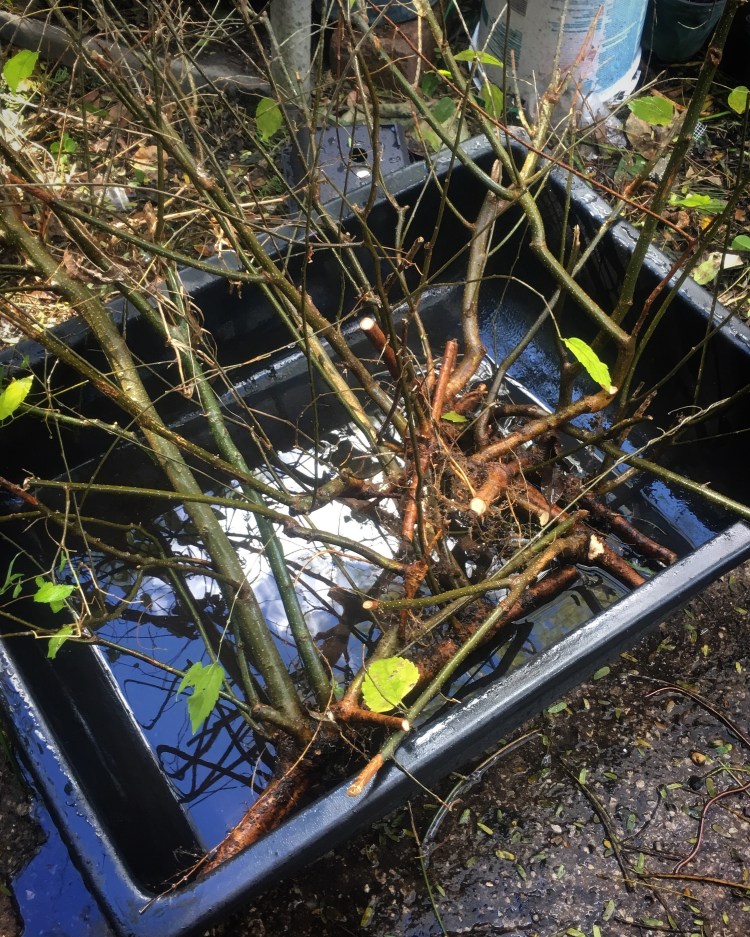
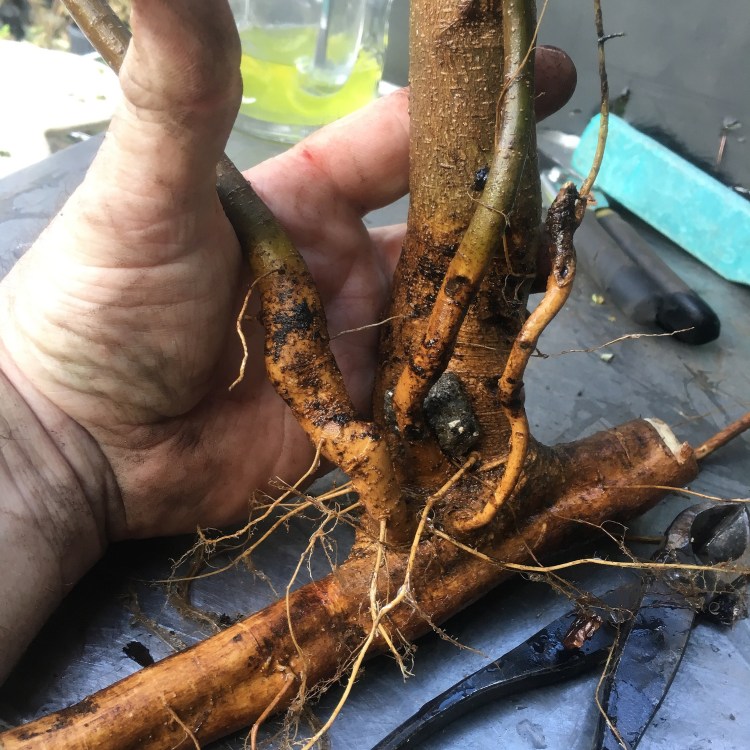
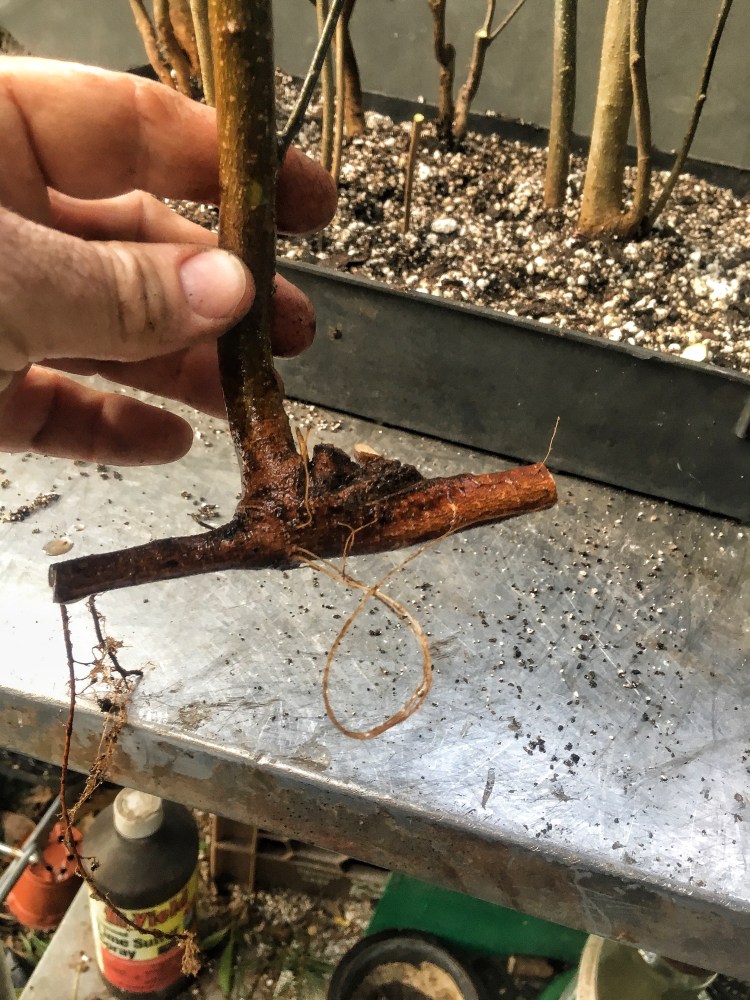
They grow like this in the ground. 
The idea is to pick some of the better ones and cut them out. 
Hopefully you have some more roots…. …..but they’ll still grow from the cut ends.
…..but they’ll still grow from the cut ends. 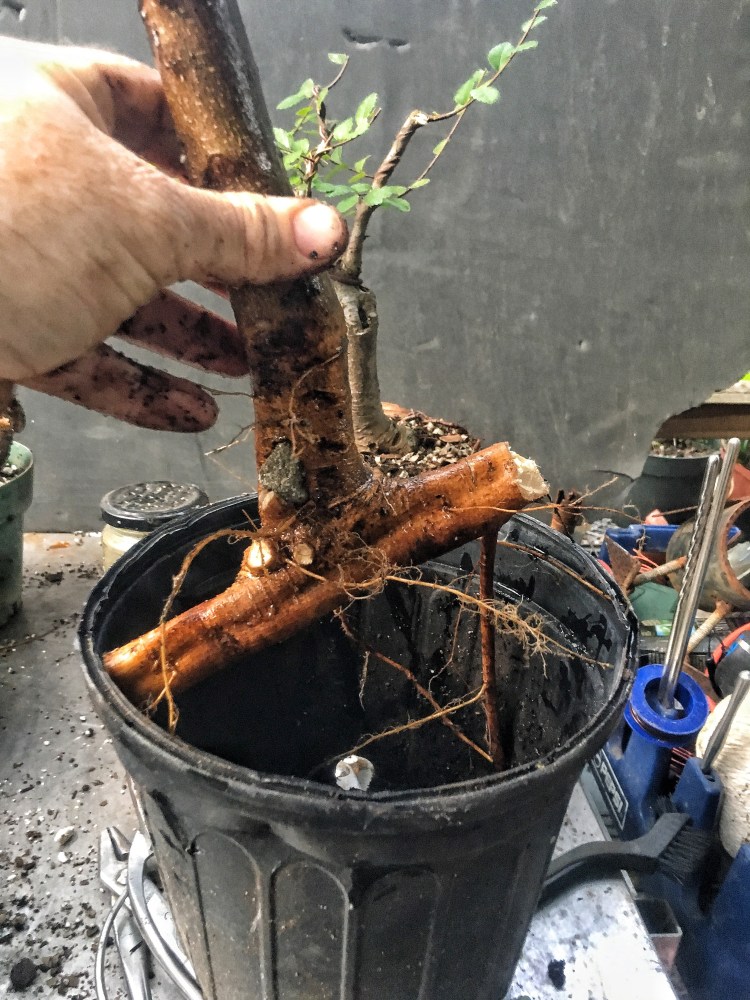 There’s a rock embedded in the base of this tree.
There’s a rock embedded in the base of this tree. 
This one is just cool.  Good movement.
Good movement. 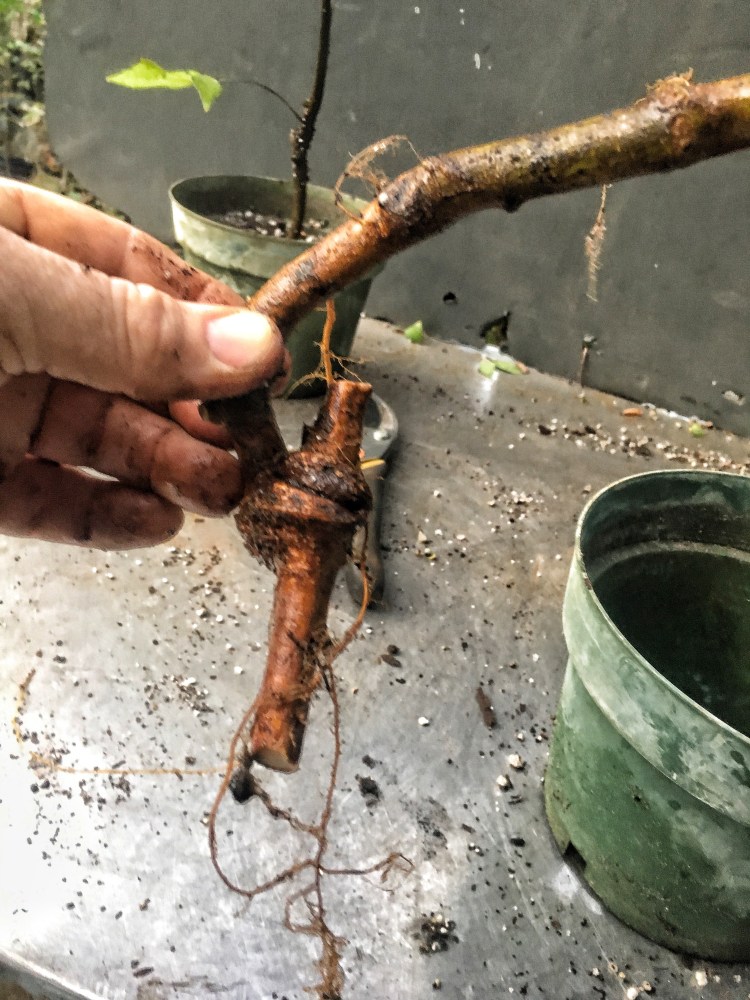
But the best use of small ones, like I’m collecting today, are for making little forests or groves, with connected roots.  For those so interested, the soil is 1/2 perlite, 1/2 pinebark. Nothing special except it’ll grow roots.
For those so interested, the soil is 1/2 perlite, 1/2 pinebark. Nothing special except it’ll grow roots.
 It’s almost like a raft, but the idea behind the raft is for a fallen tree to grow roots where the trunk is touching the ground and the other side to grow new trunk from the branches.
It’s almost like a raft, but the idea behind the raft is for a fallen tree to grow roots where the trunk is touching the ground and the other side to grow new trunk from the branches.
I’m not sure where the front is yet….
 It’ll be cool. Very natural looking. I’ll probably add more when it goes into a proper pot, I have plenty more trees to choose from.
It’ll be cool. Very natural looking. I’ll probably add more when it goes into a proper pot, I have plenty more trees to choose from. 
 Not bad for a backyard nursery and a “weed” tree. Generally, you want to pass up collecting small trees like this for unless your plan is to grow them larger (a good ten year project) or if you want to make little forests like this. Or if you want small trees I guess. What you generally want are bigger trees with character and movement. Like this one-
Not bad for a backyard nursery and a “weed” tree. Generally, you want to pass up collecting small trees like this for unless your plan is to grow them larger (a good ten year project) or if you want to make little forests like this. Or if you want small trees I guess. What you generally want are bigger trees with character and movement. Like this one- which is going to make a fantastic tree, can’t wait to work on it.
which is going to make a fantastic tree, can’t wait to work on it.
One last aesthetic tip. When making a forest or clump, the fattest trunk should be the tallest tree. It’s “older” and therefore should be taller. 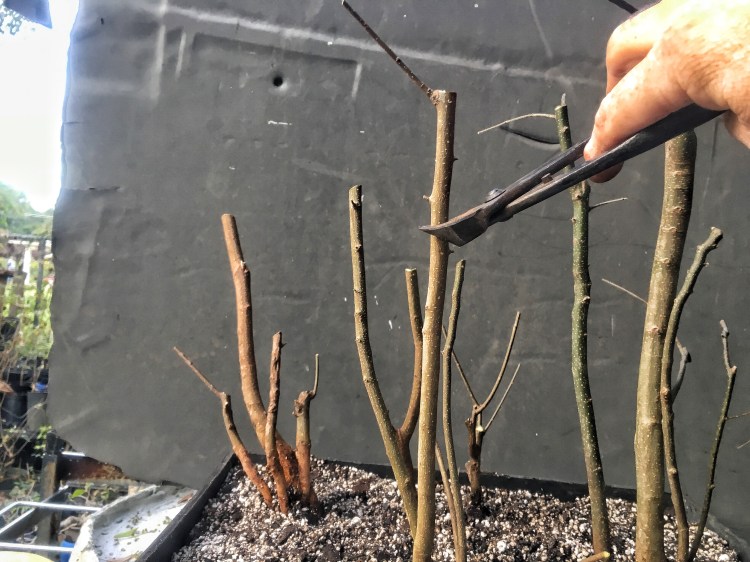
Get out there now (or when the ground thaws I guess….) and find yourself some root connected trees and put together a cool little forest. Make sure you get permission first though. 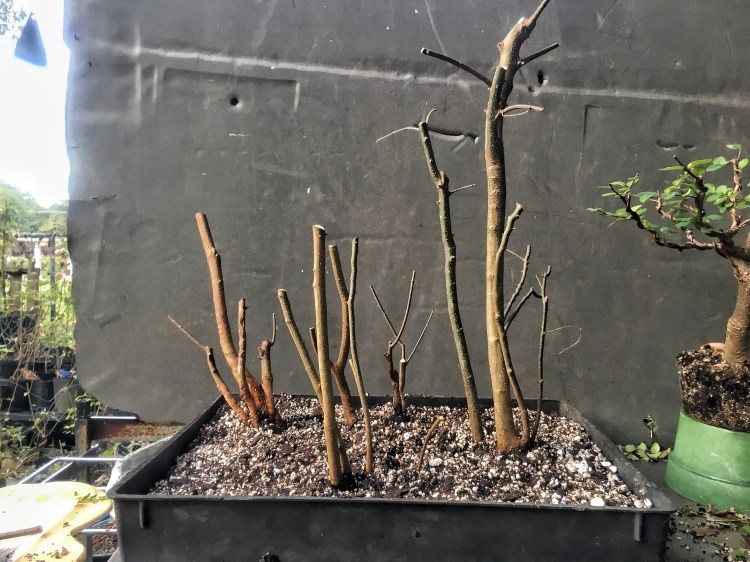
After care for something like this: no fertilizer until new growth hardens off, but plenty of water (hence the heavy organic component). I also tend to keep them in the shade and protected from the wind to minimize water loss due to evaporation. I’ll keep you up to date, cross your fingers, hopefully I get good results (that’s the cue for the Perpetual Intermediates out there to tell me that they’ll all die because I didn’t get a “proper” root ball. Go ahead, say it, sign your name to it, though, and own it. I’ll publish your reply)
Next time, a small cypress forest and a Chinese elm or two.




I wack off suckers from my maple every year, thanks for the new plan.
LikeLike
This is a under utilized species for bonsai. The seeds from our big backyard Hackberry are enjoyed by birds all winter and sprout readily in my flower beds. We have small curvy ones we have grown from whips and kept in a little pot, the leaves stay tiny. I do not notice much growth from the roots as you do. Interesting. I live in southeastern Virginia, in a neighborhood with many old, warty and majestic hackberry trees.
LikeLike
You probably have celtis occidentalis, the American hackberry. They grow in dryer places than the southern hackberry.
LikeLike
Hi. I have some sprouts coming up from a Pagoda Dogwood and some kind of crab apple. However, they aren’t on roots some distance from the tree, they are coming out of the base of the trunk or where I had to cut off one trunk from the multi-trunk dogwood ..(The crab apple has sucker-like growth coming out of a thousand odd places on the trunk, too, as is typical.) Can those closest to the ground be used somehow? I guess they might air layer or even be bent to the ground to layer that way. Any other thoughts?
LikeLike
Those are more what’s called basal shoots. For your information, if you want to discourage them, tear or rip them off as opposed to cutting, that’s the general procedure.
The problem with them is that you might damage the main tree too much if you cut them out. But a ground later is a good idea, bend them down and cover with dirt.
LikeLike
Reblogged this on Wolf's Birding and Bonsai Blog.
LikeLike
I enjoyed the pictures and the plant ing of little trees I have tried to start a planting but have I not been successful
LikeLike
The most important factor to consider when potting or repotting bonsai and doing seriously traumatic work is timing. The time to do what I did, for me, in Florida, is now. If you were in say New York it would be in a month or more. In Australia? In the months of June or July, their winter.
And it applies to many procedures with many trees. Don’t heavy prune maples in the summer, repot ficus in winter etc.
This is why joining a club and finding a person with good trees to teach you is important. And that’s the rub, not someone who’s been doing bonsai a long time but someone who has internalised the lessons of bonsai and their trees reflect that.
LikeLike
Thank you for sharing! Is there a species or two that you would recommend?
LikeLike
Try for native trees to your area first
LikeLike
Nice forest tree collection. And the commentary…as usual and anticipated…is educational entertainment! Fabulous. Excellent idea. Question….when you plant like this do you tie-down the roots? Nice flatter plastic container…I haven’t found that type yet.
LikeLike
I tie down every tree in a shallow pot
LikeLike
Any update on how this first turned out a couple years later? Did they take root?
LikeLike
They did, they’re just sitting in that same tray growing
LikeLike